Lynred wins Sentinel-2 NG mission pre-development contract
Lynred has been selected to develop an advanced multispectral infrared detector for the Sentinel-2 Next-Generation (NG) land monitoring satellite mission; the continuation of the Sentinel-2 mission.
Both missions are led by the European Space Agency (ESA), within the framework of the European Commission Copernicus NG program.
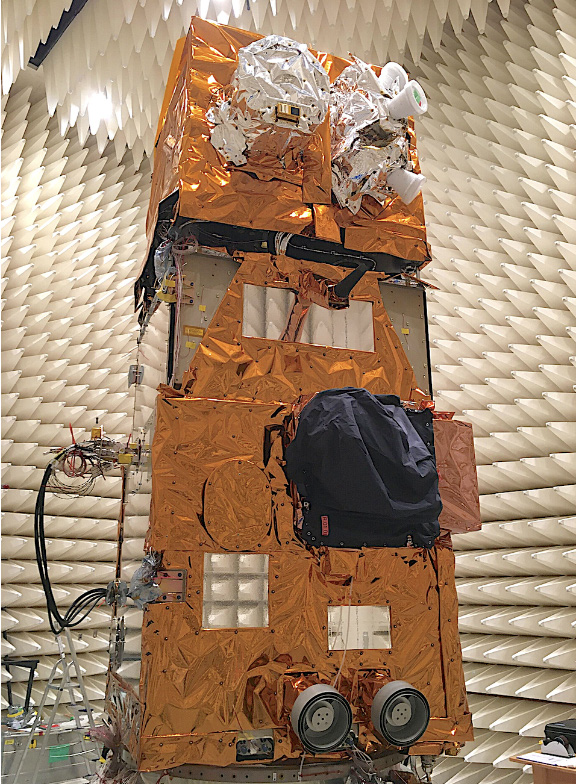
Sentinel-2C ready for electromagnetic
compatibility testing.
Multispectral imagery is used to discern land surface features and landscape patterns; the data it generates serves farming and forestry, as well as climate and disaster protection.
Lynred is contracted for the pre-development of Phase A/B1 of the next-generation project. It will design a multispectral infrared detector, a complex high-resolution imaging device, to meet Sentinel-2 NG’s requirements for improved performance at the system level to achieve a higher level of survey accuracy. These parameters include shortening the ground sample distance and adding new spectral bands. The first prototype is due in 2026.
Lynred has already developed and manufactured infrared detectors for the Sentinel-2 mission, with satellites Sentinel 2A and 2B launched in 2015 and 2017 respectively and Sentinel 2C and 2D, expected to launch in the near future.
At the start of the next decade, the Sentinel-2 Next Generation (NG) mission will replace the current generation in operation. Its aim is to provide continuity in monitoring plant growth and map changes in land cover and in monitoring the world’s forests beyond 2030.
The program will introduce several performance enhancements, notably through better land surface resolution (current Sentinel-2 resolution = 10m / 20m respectively in visible and infrared spectral ranges. Target Sentinel-2 NG resolution = 5m / 10m respectively).
In parallel with the challenge of designing a new high-end multispectral IR detector with increased performance requirements for the pre-development phase, Lynred must also address the industrial process to manufacture these detectors in volume quantities.
“Sentinel-2 NG is a challenging and exciting project. Lynred is very proud to have been selected to participate in the development of the new generation of satellites for this extraordinary land monitoring mission,” said Philippe Chorier, space business development manager at Lynred. “Our long track record in space missions is testimony to the unfailing performance of our infrared detectors in extreme conditions and in our ability to fulfill the stringent criteria of space agencies.”
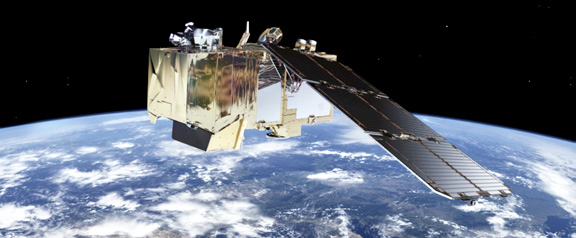
Sentinel 2-A, 2-B, 2-C, artistic rendition
“Whereas in the previous Sentinel-2 mission, Lynred delivered tens of flight models over several years, Sentinel-2 NG has heightened the industrial stakes, requiring the delivery of more units within half the time. With our industrial capacity and experience, Lynred is well equipped to deliver at an accelerated mode,” added Chorier.
Lynred’s multispectral IR detector for Sentinel-2 NG will consist of five or six detection lines. Each line has a format of around 2,000 pixels at a 15-micron pitch (meaning a detector of about 3cm long for each spectral line). The project covers the design of the entire detector to include the Readout Integrated Circuit (ROIC), the detection circuit based on Mercury Cadmium Telluride, a semiconductor material that will be hybridized to the ROIC to produce the infrared detector. It also includes the design of space-grade packaging to fit the infrared detector into the S2 NG satellite payload
Lynred and its subsidiaries, Lynred USA and Lynred Asia-Pacific, are global leaders in designing and manufacturing infrared technologies for aerospace, defense and commercial markets. It has a portfolio of infrared detectors that covers the entire electromagnetic spectrum from near to very far infrared.
The Group’s products are at the center of multiple military programs and applications. Its IR detectors are the key component of many top brands in commercial thermal imaging equipment sold across Europe, Asia and North America. Lynred is the leading European manufacturer for IR detectors deployed in space.
Blackswan Space secures $$$ in pre-seed funding round
Since 2019, Blackswan Space has pioneered autonomous space technologies in collaboration with the European Space Agency (ESA) and commercial partners.
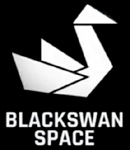
The company’s Mission Design Simulator (MDS) enables customers to simulate complex spacecraft maneuvers for on-orbit servicing, object retrieval missions, space domain awareness, or simulating satellite constellations in real-time. The Vision Based Navigation (VBN) hardware payload running proprietary algorithms, enables spacecrafts to perform autonomous navigation maneuvers when control from the ground is not possible.
The funding round was led by ScaleWolf, a hybrid accelerator and fund for defense tech with participation from Linas Sargautis, co-founder of NanoAvionics, Lemonade Stand, Baltic Sandbox Ventures, and Vladas Lašas – a serial entrepreneur and angel investor. The company will use the funding to grow its engineering staff to accelerate product development and scale its commercial activities.
Since its inception in 2019, Blackswan Space has been successfully developing its Mission Design Simulator and Vision Based Navigation products with internal funding, R&D grants as well as multiple contracts from the ESA. With the new infusion of capital, the company is well positioned to accelerate MDS and VBN development and commercial activities in 2024, preparing for on-orbit demonstration of its core technologies in the next few years – all part of the bigger picture to support the exponential growth of the in-space economy.
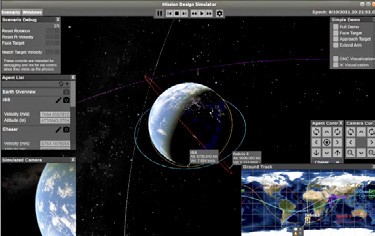
“We are in a strong position to solve one of the major problems and opportunities facing the space economy today – the growing number of satellites and other space infrastructure in orbit that will be impossible to control all from the ground,” said Marius Klimavicius, co-founder and CEO of Blackswan Space. “Our nimble team has bootstrapped by self-funding and winning contracts from ESA, this funding round is the rocket booster to help us level up.”
Dave Harden, partner at ScaleWolf and former COO and C-Founder of AFWERX, a U.S. Air Force’s research laboratory, said, “We are glad to be one of the first investors in Blackswan Space. Their vision and technology are perfectly timed. Space domain is the next big thing in the defense sector.”
Linas Sargautis, angel investor and co-founder of Kongsberg NanoAvionics, said, “I am glad to back this talented company, developing products that enable a wide range of in-orbit servicing applications — the new frontier of the space industry.”
CMGs deliver a quantum leap in smallsat capabilities
For more than a decade, RTX’s small satellite manufacturer and mission services provider, Blue Canyon Technologies’, high-precision, advanced solutions have disrupted the space industry by demonstrating how lower-cost smallsats serve as a complement to larger satellites in the commercial, science and defense sectors.
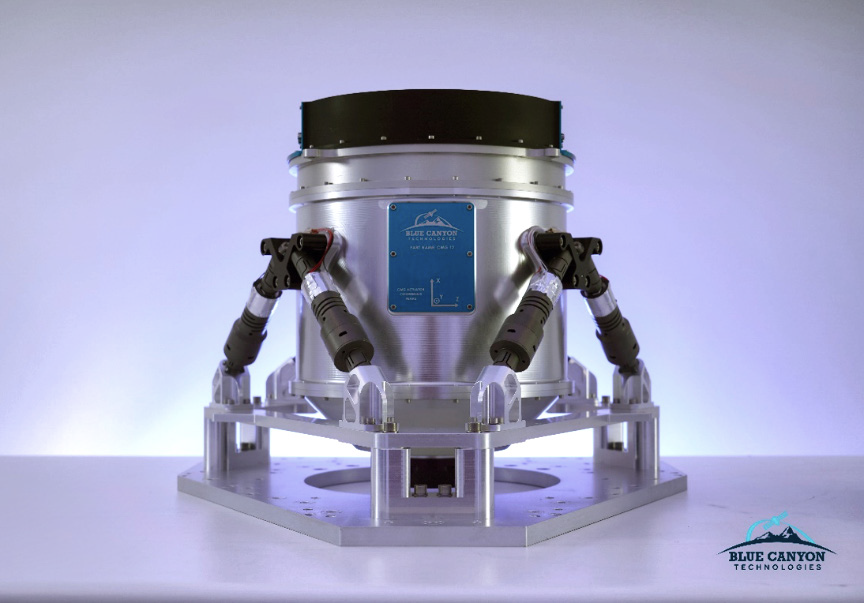
Now, the same can be said for the company’s components. By leveraging existing technology, Blue Canyon is bringing the final frontier a little closer to home.
Just 10 years ago, the capabilities of inexpensive smallsats were limited and tech demos were the typical posture. Today, we’re at an inflection point where significant investment and expectation is being put into constellations of high-performance operational smallsats. The capability and mission value multipliers offered by Control Moment Gyroscopes (CMG) are already becoming market differentiators and is expected to accelerate.
Previously reserved for larger, more traditional satellites, CMGs offer at least 10 times the torque of reaction wheels with up to five times less power. They provide a quantum leap in the speed with which a spacecraft can reorient and point in another direction, multiplying the return on investment for any mission limited by the responsiveness of its bus platform, especially Earth Observation (EO).
This advanced spacecraft agility, coupled with low jitter that maximizes the quality of mission data, allows CMGs to offer the performance needed to maximize payload-pointing operations while on-orbit.
Blue Canyon Technologie has delivered multiple sets of flight CMGs designed at a SWaP-C appropriate level for the smallsat market while maintaining the increased performance for which CMGs are known. Additionally, Blue Canyon stands ready to integrate CMGs into the firm’s standard product offerings to help customers achieve extreme agility and precision pointing.
Blue Canyon offers the CMG-12, which has 12-Newton-meter-second rotor momentum and 12Nm of output torque, and the CMG-8, featuring 8Nms of momentum and 8Nm of output torque. The CMG-12 is designed using a radiation-hardened parts paradigm with redundancy options to meet the risk tolerance and mission length needs of various markets.
The vibration and jitter isolation are integrated into each CMG, with the control electronics as a separate unit. CMGs provide long life, high-control accuracy, and low-induced vibration performance required for demanding precision-pointing missions.
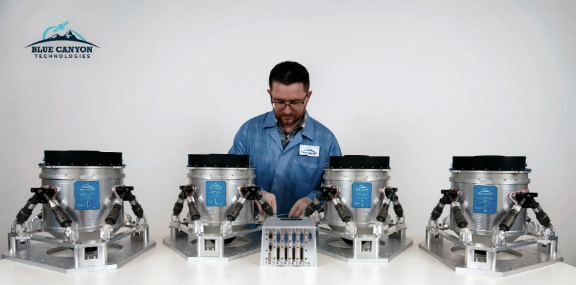
To aid customers in harnessing this opportunity, Blue Canyon is integrating CMGs into its standard spacecraft platforms and turnkey guidance, navigation and control systems. These platforms provide increased performance, low-cost, high-reliability CMG-based solutions designed for high-volume production in response to space mission needs.
Founded in 2008, Blue Canyon built its reputation on flight-proven, reliable components, with nearly 300 sun sensors, 200 star trackers and 800-plus reaction wheels launched to date. With 70 spacecraft launched since its inception, Blue Canyon has an impressive flight heritage of 100 years on-orbit for spacecraft, 151 years for turnkey guidance and navigation systems and 3,100 years for components.
The company’s components and bus platforms have completed missions ranging from Very-Low Earth Orbit (VLEO), LEO, GEO, Cislunar and an interplanetary journey. Equipped with dedicated facilities and staff for each business unit and in-house production resources, Blue Canyon continues to solve the toughest challenges in space with its high-performance solutions to support all types of missions regardless of size or scope.
Further information is available via an email to info@bluecanyontech.com


